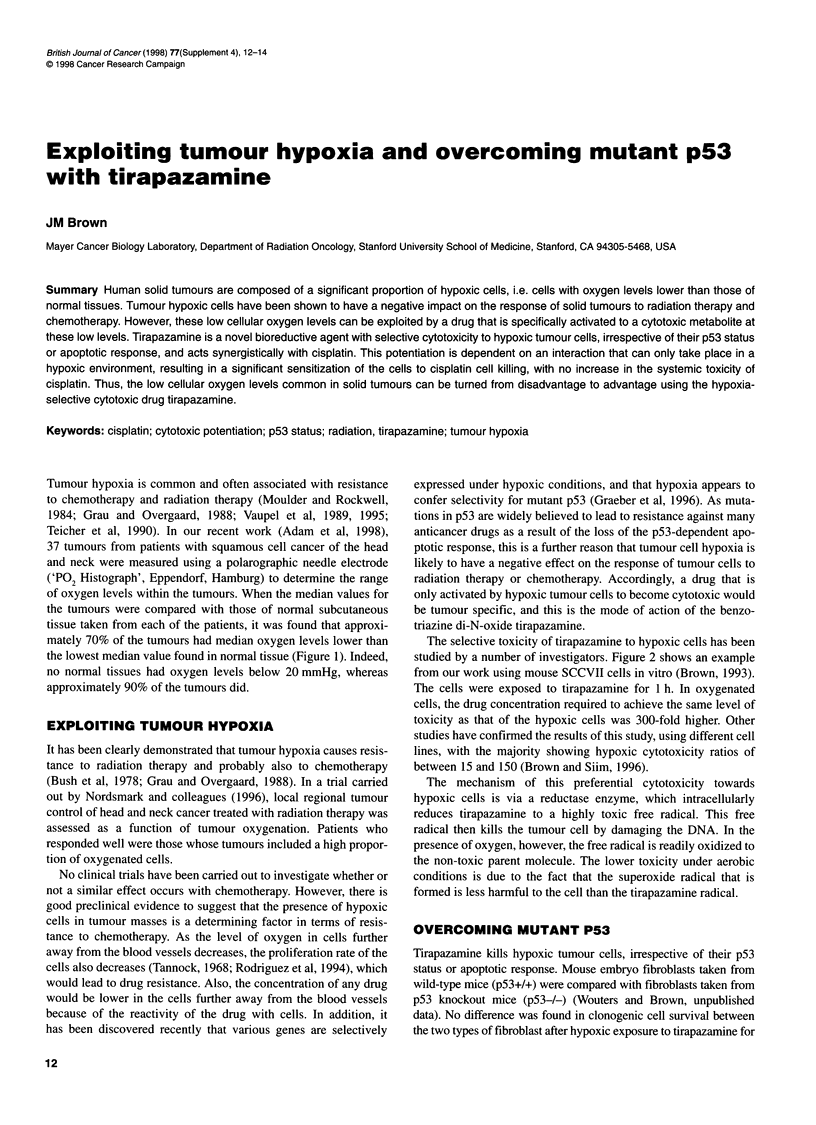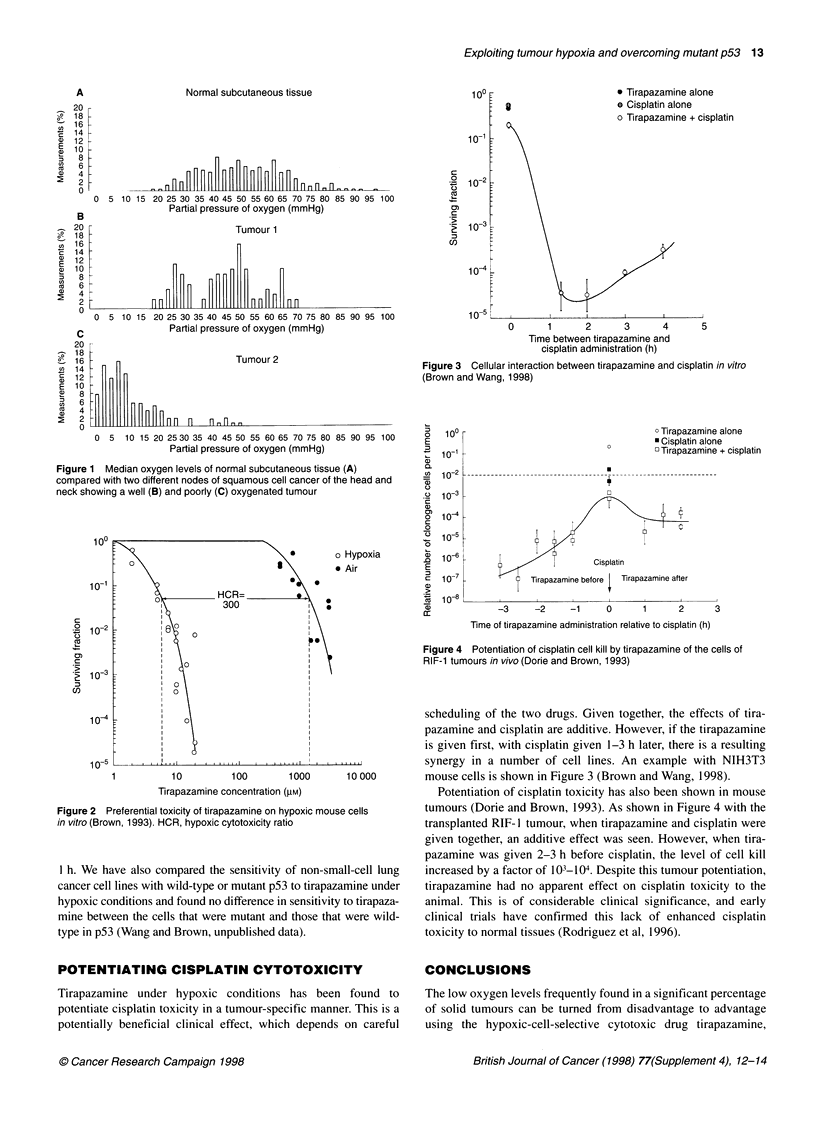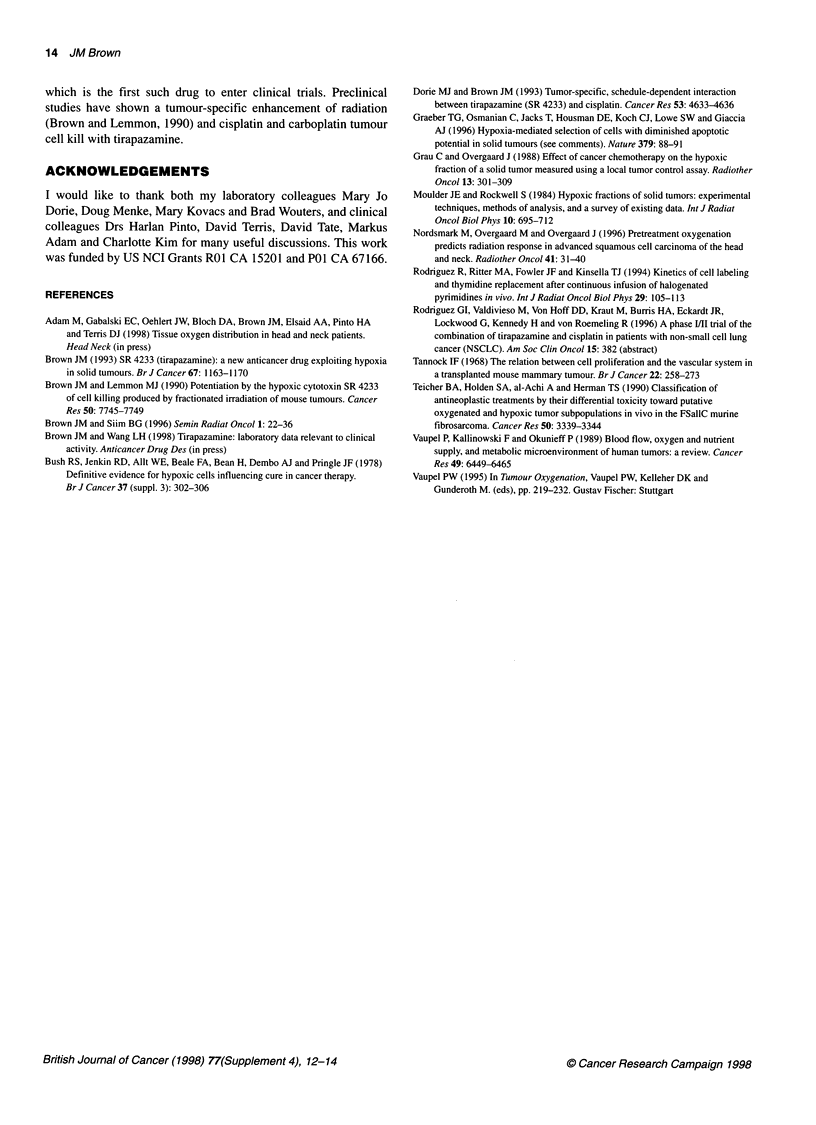Abstract
Human solid tumours are composed of a significant proportion of hypoxic cells, i.e. cells with oxygen levels lower than those of normal tissues. Tumour hypoxic cells have been shown to have a negative impact on the response of solid tumours to radiation therapy and chemotherapy. However, these low cellular oxygen levels can be exploited by a drug that is specifically activated to a cytotoxic metabolite at these low levels. Tirapazamine is a novel bioreductive agent with selective cytotoxicity to hypoxic tumour cells, irrespective of their p53 status or apoptotic response, and acts synergistically with cisplatin. This potentiation is dependent on an interaction that can only take place in a hypoxic environment, resulting in a significant sensitization of the cells to cisplatin cell killing, with no increase in the systemic toxicity of cisplatin. Thus, the low cellular oxygen levels common in solid tumours can be turned from disadvantage to advantage using the hypoxia-selective cytotoxic drug tirapazamine.
Full text
PDF


Selected References
These references are in PubMed. This may not be the complete list of references from this article.
- Brown J. M., Lemmon M. J. Potentiation by the hypoxic cytotoxin SR 4233 of cell killing produced by fractionated irradiation of mouse tumors. Cancer Res. 1990 Dec 15;50(24):7745–7749. [PubMed] [Google Scholar]
- Brown JM, Siim BG. Hypoxia-Specific Cytotoxins in Cancer Therapy. Semin Radiat Oncol. 1996 Jan;6(1):22–36. doi: 10.1053/SRAO0060022. [DOI] [PubMed] [Google Scholar]
- Dorie M. J., Brown J. M. Tumor-specific, schedule-dependent interaction between tirapazamine (SR 4233) and cisplatin. Cancer Res. 1993 Oct 1;53(19):4633–4636. [PubMed] [Google Scholar]
- Graeber T. G., Osmanian C., Jacks T., Housman D. E., Koch C. J., Lowe S. W., Giaccia A. J. Hypoxia-mediated selection of cells with diminished apoptotic potential in solid tumours. Nature. 1996 Jan 4;379(6560):88–91. doi: 10.1038/379088a0. [DOI] [PubMed] [Google Scholar]
- Grau C., Overgaard J. Effect of cancer chemotherapy on the hypoxic fraction of a solid tumor measured using a local tumor control assay. Radiother Oncol. 1988 Dec;13(4):301–309. doi: 10.1016/0167-8140(88)90225-3. [DOI] [PubMed] [Google Scholar]
- Moulder J. E., Rockwell S. Hypoxic fractions of solid tumors: experimental techniques, methods of analysis, and a survey of existing data. Int J Radiat Oncol Biol Phys. 1984 May;10(5):695–712. doi: 10.1016/0360-3016(84)90301-8. [DOI] [PubMed] [Google Scholar]
- Nordsmark M., Overgaard M., Overgaard J. Pretreatment oxygenation predicts radiation response in advanced squamous cell carcinoma of the head and neck. Radiother Oncol. 1996 Oct;41(1):31–39. doi: 10.1016/s0167-8140(96)91811-3. [DOI] [PubMed] [Google Scholar]
- Rodriguez R., Ritter M. A., Fowler J. F., Kinsella T. J. Kinetics of cell labeling and thymidine replacement after continuous infusion of halogenated pyrimidines in vivo. Int J Radiat Oncol Biol Phys. 1994 Apr 30;29(1):105–113. doi: 10.1016/0360-3016(94)90232-1. [DOI] [PubMed] [Google Scholar]
- Teicher B. A., Holden S. A., al-Achi A., Herman T. S. Classification of antineoplastic treatments by their differential toxicity toward putative oxygenated and hypoxic tumor subpopulations in vivo in the FSaIIC murine fibrosarcoma. Cancer Res. 1990 Jun 1;50(11):3339–3344. [PubMed] [Google Scholar]
- Vaupel P., Kallinowski F., Okunieff P. Blood flow, oxygen and nutrient supply, and metabolic microenvironment of human tumors: a review. Cancer Res. 1989 Dec 1;49(23):6449–6465. [PubMed] [Google Scholar]


